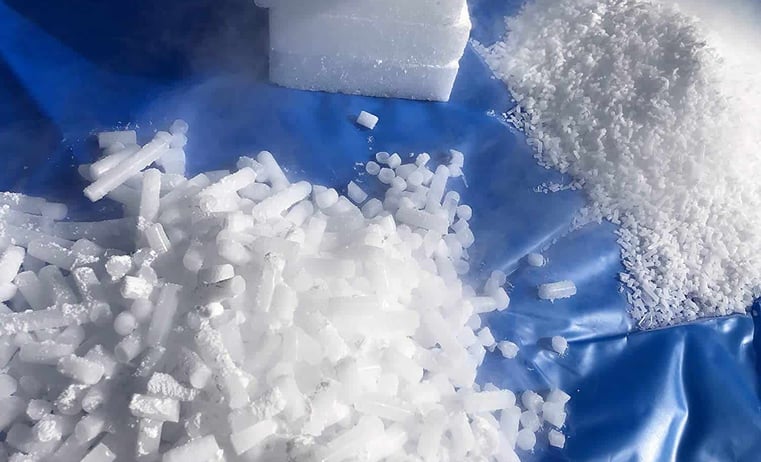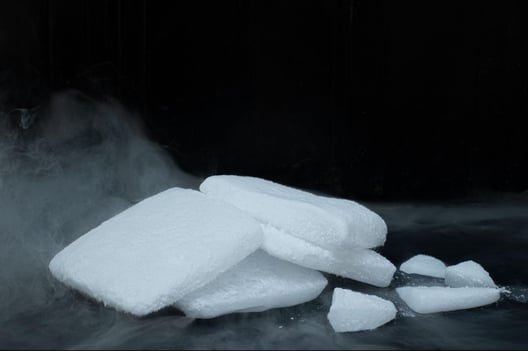Dry Ice for Hermetic Crop Storage: A Simple and Effective CO₂ Source
Dry ice is an efficient and residue-free source of CO₂ for hermetic crop storage. It enables rapid creation of modified atmospheres for grain preservation and insect control—ideal for organic and conventional farming.


What is dry ice?
Dry ice is the solid form of carbon dioxide (CO₂), commonly produced as cylindrical pellets or blocks. Unlike regular ice, it sublimates—transforms directly from solid to gas—at −78.5 °C under atmospheric pressure, without passing through a liquid phase. Because of this property, it’s widely used as a cooling agent across various industries.
But beyond refrigeration, dry ice is increasingly recognized in agriculture as a practical and effective tool for creating CO₂-enriched storage environments—particularly for insect control and grain preservation.
Why Use CO₂ in Crop Storage?
Carbon dioxide has long been used to protect stored crops by displacing oxygen in sealed containers. In such modified atmosphere (MA) environments—typically high in CO₂ and low in O₂—most storage pests are unable to survive or reproduce. This technique not only extends shelf life but is also compatible with organic certification standards, as CO₂ leaves no chemical residue.
Traditionally, these atmospheres are generated by injecting bottled CO₂ into sealed silos or big bags. However, this method requires gas cylinders, regulators, hoses, and careful handling.


Using Dry Ice for Modified Atmosphere Storage
Dry ice offers a more accessible and ergonomic alternative to bottled gas for small and medium-scale storage operations. Here's how it works:
Fill a Hermetic Bag: Load a hermetically sealed big bag (FIBC) with grain.
Add Dry Ice: Place a few pieces of dry ice directly on top of the grain using a shovel or insulated gloves.
Seal the Bag: Close the bag using a heat sealer. A suction valve can be used beforehand to remove as much ambient air (and oxygen) as possible.
Sublimation Process: Within hours, the dry ice will fully sublimate into CO₂ gas, saturating the internal atmosphere without introducing any moisture.
The result is a low-oxygen, high-CO₂ environment, ideal for halting insect activity and preserving crop quality. Compared to gas injection, the dry ice method is faster to set up, requires less equipment, and is highly suitable for decentralized or mobile storage systems.
Safety and Handling Precautions
While dry ice is easy to use, basic safety measures should be followed:
Wear protective gloves to avoid skin contact and prevent cold burns.
Do not overfill bags: Excessive amounts of dry ice can generate high internal pressure as it sublimates. Always account for expansion.
Ensure proper sealing: The integrity of the hermetic enclosure is key to maintaining the desired atmosphere.
Dry ice is a practical, residue-free solution for generating CO₂-rich atmospheres in sealed storage systems. Whether for grain disinfestation or long-term quality preservation, this method is fast, efficient, and compatible with both conventional and organic farming standards.
For producers seeking a simple yet powerful tool for post-harvest crop protection, dry ice offers a clean and cost-effective alternative to gas cylinders.


